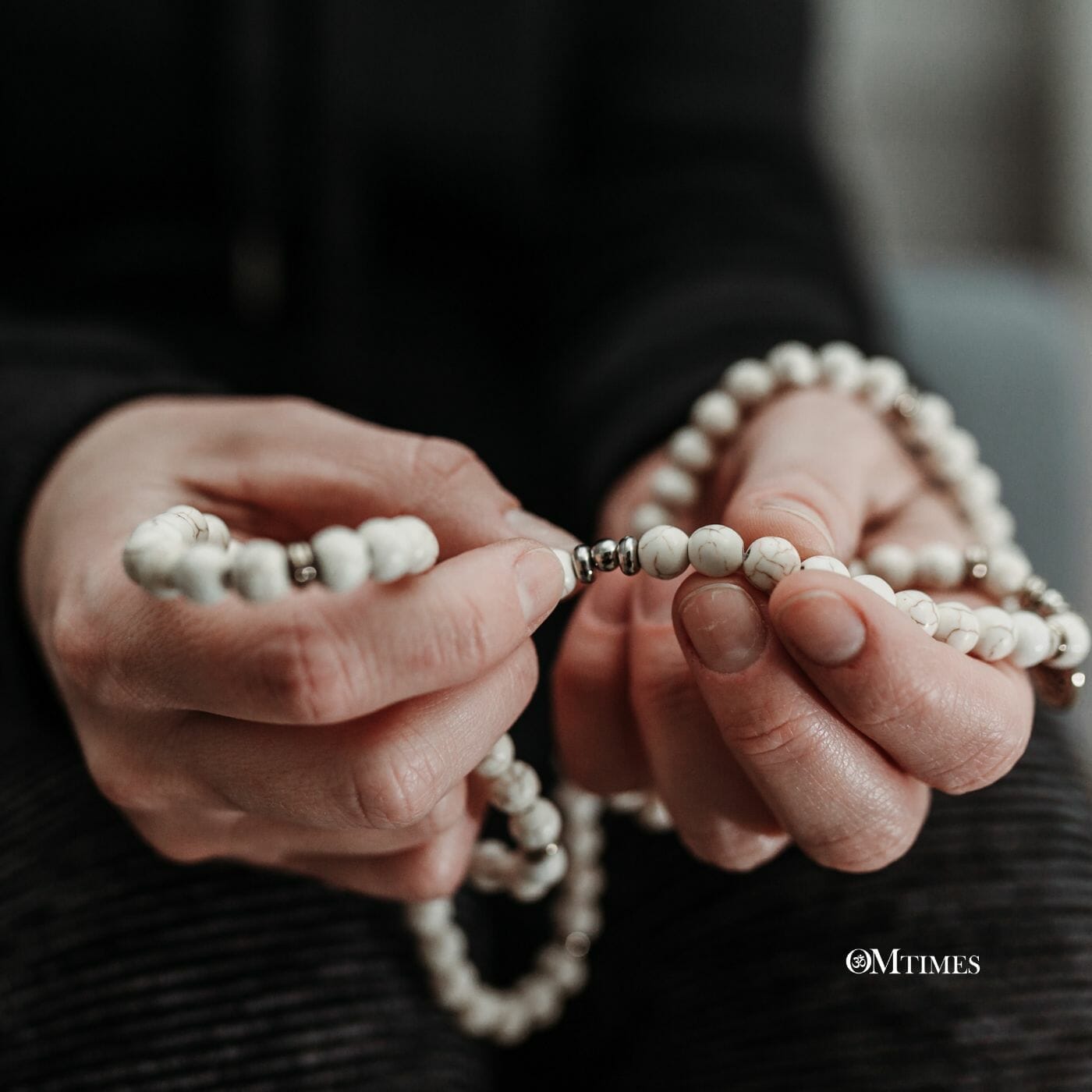Japamala and Devotional Practices

Japamala is better known in the West as a rosary of prayers, is an ancient object used as part of various religious practices and spiritual devotions. Used in many cultures and religions to pace prayers or mantralizations, these beads come in many different shapes, sizes, and materials and can have an unusual number of beads, depending on culture or religion.
Jampala
In Hinduism and Buddhism, they are used with 108 beads, always having a more significant account representing the Divinity, around which the 108 distinct manifestations, returns, or incarnations revolve. It is the representation of the diversity that revolves around a single unit.
“Japa” is a Sanskrit word that comes from the verbal root “jap,” which means “to whisper, to whisper.” “Japa” is the yogic practice of the murmuring repetition of mantras, scripture passages, or the name of a deity.
The repetition of these mantras for the “Japa,” or a “chain,” a “cord of energy.” Mala is a word with many meanings in Sanskrit, but in this case, it means only “bead of beads. “We then have two chains, one spiritual, “Japa” and another material, “Mala.” Thus, the spiritual energies invoked “Japa,” energize the “Mala.” Generally, the “mala,” used for the “japa,” or “whisper,” contains 108 beads.
It is believed that completing the circuit of 108 mantras is one more step on the path of spiritual upliftment. Each turn performed in the mala is a step on the ladder for union with the divine ether.
A Mala encourages its users to do the japas daily.
Japamala: The Devotional Practice
Reciting Japamala is an essential prayerful attitude for any devotee who wants to approach the mystical philosophy of Divinity and may consecrate the Japamalas to the Blessed Vishnu, Krishna, the Blessed Divine Mother, the Christ, or merely “God”. To use Japamala is to worship the divinity, and one humbles oneself. Adopt the practice of doing Japamala, many times a day, and every day facilitates an individual to advance blessedly.
How to Pray with Japamala
Hold the Japamala with one hand and with your thumb turn the small beads as you make your prayers or repetitions of sacred mantras or Bija sounds. Hold the first count with your thumb and make your first prayer when you finish pull the second account and continue your prayers, continuing until the end, until you complete the 108 accounts.
Your Rosary of prayer beads can be magnetized with the “Japa” power of your mantra, for this, you will need to practice every day for at least 40 days in a row. After 108 days the mala will be charged with the power of the mantra intoned/ whispered/meditated, and you may place it lightly on yourself or others to transmit the energy of the mantra, stored in the light mandala, formed in your ‘prayer rosary “or mala.
The ideal would be to use a different mala for each mantra. When using your mala with a new mantra, the energy of the new mantra will begin to replace the power of the previous mantra, so it is that we strongly recommend using a new Mala with each mantra if possible, of course.
Another good idea is to have a Mala for each spiritual ray and or chakra. Each of the seven major chakras carries the energies of one of the seven major consciousnesses of God. When you are not using your mala, store it in a clean, holy place. The best place to guard it is on a personal altar or on a sacred statuette of a deity.
The mala beads are used so that a person can think about the meaning of the mantra and his words as he chants, without having to keep counting the times he chants.
Japamala, a Tradition in Various Religions
Islamic tradition also has a rosary of prayer beads called “Tasbi” which they hold in their hands as they repeat their prayers. They roll the beads between their fingers as they repeat the name of Allah.
Christians have their “rosary” in their hands as they pray their daily prayers. It is said that the word “rosary,” which has obvious similarities to the mala, came from the traditional Hindu “Japamala.”
When Roman explorers came to India and found the Prayer beads, they heard “jap mala” instead of “japa mala.” “Jap” means “rose” and a suitcase then was taken to the Roman Empire as “Rosarium.”
The rosary has 50 beads separated ten by ten by a larger one, and its ends are joined in a cross. Totaling 54 beads (half of the eastern rosary of 108 beads). It is said that all the Hail Mary prayers are symbolized by the white roses and all the 5 Lord’s prayers at the beginning of the sequences of ten Hail Mary are symbolized by the red Rose of Christ.
Hindus, when they decide to make a mantra more than 108 times, put one grain of rice for every 108 times, into a bowl. Every time they get to Meru (The central bead in a Japamala), they take a grain of rice from the bowl.
In Tibetan Buddhism, it is common to use larger malas, for example, malas that contain 111 beads. They count a suitcase like 100 beads and 11 extras to make up for possible mistakes made along the way. In Buddhism, the use of the malas can be done with either hand, and the fingers used for counting can also be other, depending on the will of each Individual. What counts is the repetition of mantras.
The Islamic tradition works with a rosary of 99 beads. The rosary is divided into three series of 33 beads, each representing one world. It is said that the missing bead to complete the hundredth is only found in Paradise.
A wide range of materials is used to make the mala beads throughout every culture. In the Tibetan Buddhist tradition, they can use of bone (animal bones, most commonly ox) or sometimes human bones, the bones of deceased Lamas, are of great value.
Others use wood or seeds from the Bodhi tree. Semi-precious stones such as coral and amethyst can be used, too. The most used material for the making of malas is the sandalwood.
Sacred Human Bones of Nepal
Many Sacred and Holy Malas are made of 108 fine human skull bones from Nepal. These are practicing Buddhist skull bones that have already made the passage to the afterlife. Its price is high because of its rarity. The purpose of this Bones malas is to pray, recite mantras, and meditate on cutting selfishness and strong attachments, and cultivating a free conscience.
You will also enjoy 4 Steps to Finding the Perfect Life Mantra
Click HERE to Connect with your Daily Horoscope on OMTimes!
Visit Our Astrology Store for Personalized Reports
About the Author
Cathedral of the Soul intends to undertake the challenge of creating a multidimensional healing space that is dedicated to those who seek to enrich, enlighten, and heal themselves while serving and assisting in the healing of others. Cathedral of the Soul is one of the many spiritual outreaches of Humanity Healing International, a registered 501C3 nonprofit with Church status. https://cathedralofthesoul.org
Cathedral of the Soul is developing an Animal Ministry program. If you want to volunteer and help animals, join the Facebook groups @circleofprayersforanimals
Connect with Cathedral Of The Soul
OMTimes is the premier Spiritually Conscious Magazine. Follow Us On Facebook, Twitter, Instagram, Linkedin, Pinterest, and Youtube
Cathedral of the Soul intends to undertake the challenge of creating a multidimensional healing space that is dedicated those who seek to enrich, enlighten and heal themselves while serving and assisting in the healing of others. Cathedral of the Soul is one of the many spiritual outreaches of Humanity Healing International, a registered 501-C3 nonprofit with Church status.












